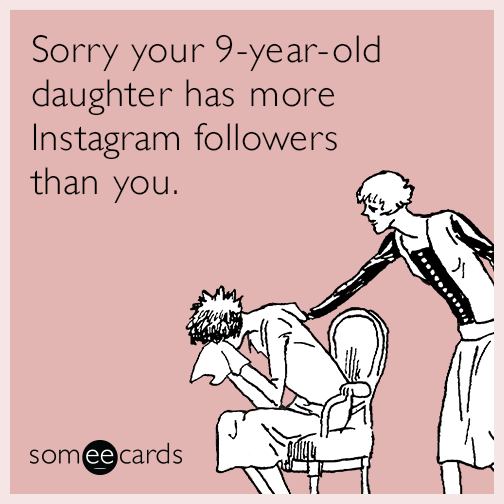How is Social Media Monitoring useful to your business?

Let’s start simple. Why would you use social media monitoring tools? To improve your business, probably. Although if you want to spy on the social life of your kids I wouldn’t judge you too much. But today we’ll concentrate on how to get the most from monitoring your brand mentions, customers and competitors for the advantages of your business.
1. Improve market research.

There is no better way to understand what your customers want than to spy on them. There, I’ve said it. Somewhere in the social media interwebs lies the information not only about your customers’ demographics, professions, and locations, but also about their preferences, habits, interests and what they want for Christmas. Why? Because people talk online. They actively discuss new and good products, like and dislike YouTube ads, leave thousands of comments on the advantages and disadvantages of Xbox One compared to PS4. They are involved.
Now you are probably thinking about good old fashioned surveys and focus groups. What was ever wrong with those? Well, firstly, social media monitoring is much cheaper. More importantly, it’s not that time-consuming. It takes ages to develop and implement a marketing research plan (apart from the fact that the process of recruiting 1000 people to fill out your questionnaire can only be compared to the 5th circle of hell). Often by the time you get results the information is already outdated. Trends change, and in our fast-paced world, they change fast. In contrast, social media monitoring provides you with real-time information.
Use it as you see fit. For example:
- Identify FAQs and adjust your website, guide, blog accordingly.
- Improve products based on your customers’ wishes.
- Come up with new product directions based on spotted trends in the target market.
- Develop marketing campaigns based on what you know about your customers.
Etcetera. Have fun.
2. Create or improve word-of-mouth.

Word-of-mouth marketing is a powerful and mysterious concept. According to Nielsen, 92% of consumers believe recommendations from friends and family over all forms of advertising. However, when WOMMA (Word of Mouth Marketing Association) and AMA (American Marketing Association) decided to find out exactly what brands were doing about that fact, they discovered something pretty alarming. Although 64% of marketing executives indicate that they believe word-of-mouth is the most effective form of marketing, only 6% say they have mastered it. This information should make marketers jump right into the accessible-to-everyone pool of communication: social media. I mean, Twitter alone sends out 58 million tweets daily! Use it!
For example:
-
Reply in real time to customers’ complaints.
50% of the customers expect a response to their complaint or query posted on social media within as little as two hours. Moreover, research shows that quick replies (even ineffective ones!) are perceived by customers better than slow but effective replies. Go figure.
-
Thank them for their tweet, post, comment on their blog. Make it personal.
Small business owners often say that social monitoring helped them make their business feel personal to their customers and that it worked well for their sales. We know that because they post reviews of SMM platforms such as Awario.
-
Introduce long engagement campaigns on social media (and aim for them to go viral).
Aim to be like Direct Line Insurance. When the London Tube went on strike they sent out stress-relief packages complete with deodorant, scented sprays and bottled water to those in need. The insurance firm found poor stuck Londoners simply by following the Tube strike hashtag. Later, happy recipients were eager to share their stories on Twitter.

A different example of a successful engagement campaign comes from Google (is anyone surprised?). They have a 'Doodle for Google' contest. School-kids are encouraged to get creative and make impressions of Google’s logo, some of which are then used on its homepage. This approach ensures brand loyalty in people, which is so hard to achieve these days.
-
React to a crisis promptly.
I genuinely hope you won’t ever have to handle a crisis. However, it is necessary to be prepared, react within minutes and always remember that saying ‘sorry’ goes a long way (Do I sound like a primary school teacher? I aimed for that.). Besides, in a social media world, any tiny issue can turn into a crisis. For example, when a user of Reddit posted that JC Penney Teapot looks like Hitler, the store took time and effort to reply to everyone. It was unintentional, they said. They would rather have it look like a snowman.

It does, though...
3. Improve what’s going on inside your business.

Image source: Happy.co.uk
Social Media Monitoring basically helps you keep an eye on the social life of your employees as well as find new employees through, again, social media. For example, the ones that are already genuine fans of your product. Maybe you don’t see the benefits of that. Here are just some ideas you might find interesting:
- Find out if anyone in your company may be participating in discussions and is posting information without your approval, and if the post is (in)accurate.
- Recruit/hire the right people.
- Find subject matter experts.
You can also measure employee engagement on social media. Their attempts to promote the company’s products on their personal social channels will tell you that employees are interested in driving the company’s success. A lack of social activity may tell you that you need to work harder on engaging your employees. An interested employee works better. Trust me, I’m a scientist.
4. Competition research.
Surely, you can’t ask your amazing customers to do all the work on promotion for you. You have to continue advertising your brand and products. Just this time social media monitoring tools are here to help you. Through spying on your competitors, of course. SMM tells you where your competitors promote their brands, how they do it, and whether they are successful or not. So, the main point here is nice and simple:

- Identify your old and new competitors. Find out what they are doing. Who’s talking to them? Who are they talking to? What are they talking about? Are they having any success?
- Look at your competitors as good and bad examples.
5. Implement social selling.

Not so long ago, in 2014, QuickSprout reported that only 6% of businesses use social media to generate sales. Despite everything we’ve talked about up to now, not many companies are quick to catch up with the rapidly evolving social media. Well, tough: 81% of B2C shoppers search online before making a purchase. Basically, they don’t want you to call them (really, no one likes cold-calling) and tell them all about your product. They want to find you online through their trusted(!) channels and discover everything they need to know about you and your product. So, what does it leave you with:
- Find discussions of your product category and offer them your product.
- Uncover questions and conversations about your product category and provide them with information about your product.
6. Market through your influencers.

Influencers. In this context, people who live in a social media world and discuss your product category a lot. You might want to choose the ones with many followers and views, or the ones that cover products as close to yours as possible. Your choice, but don’t ignore the social media influencers. Have you seen the number of ‘experts’ on YouTube? Instagram celebrities? Sending some of them a complimentary bag of sweets or makeup can potentially be more profitable than hiring a costly model even if she used to be famous.
To sum up:
- Identify your influencers.
- Rank your influencers in order of importance.
- Do your best to befriend them. Send them something free, invite them to a presentation of your product. Like/share/comment their photo/video/blog.
And finally, my last attempt to be useful to you today.

Social media monitoring is often called ‘social media listening’.
That is because IT guys enjoy naming the same things differently to make their jobs sound more complicated.
But this name should remind you that simply monitoring isn’t enough. You have to show your customers that you listen to what they have to say. Show them you value their opinion - everyone likes that. React to it, immediately, every time. Leave a polite comment, respond to a problem within minutes, offer to sell a Batman suit right when they are going through the most important Halloween dilemma. It will pay off.
By signing up I agree to the Terms of Use and Privacy Policy













